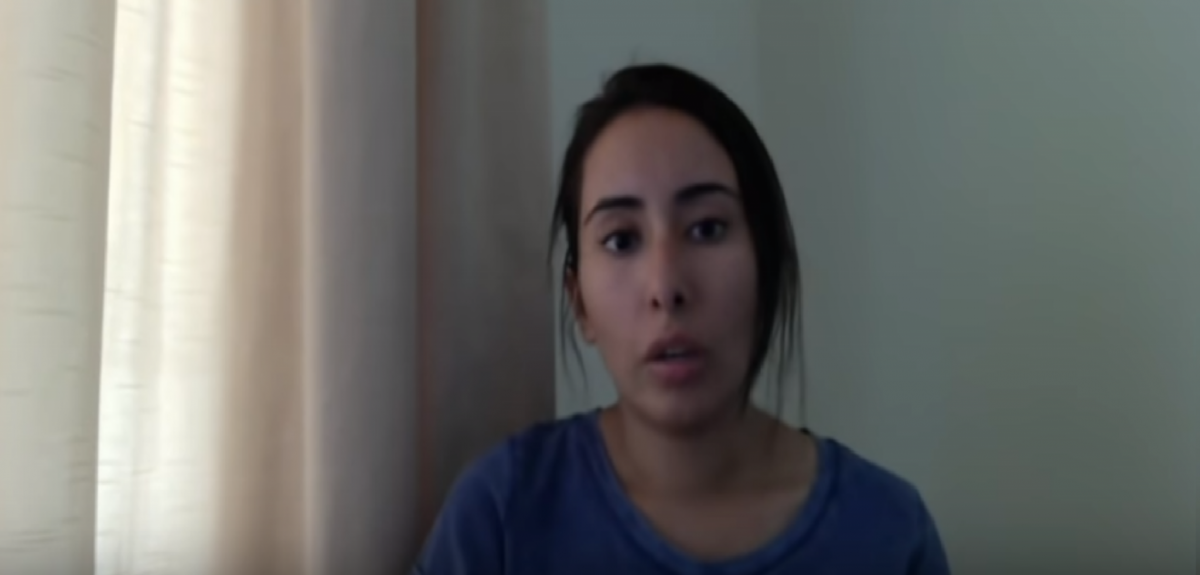Snehesh Alex Philip
March 7, 2020, ThePrint
Indian officials say London court ruling came in a ‘family dispute’ that does not involve international governments, defence ministry has ‘no information’.
The government has chosen to keep mum over a United Kingdom court saying that Indian forces helped in the “capture” of fleeing Dubai princess Sheikha Latifa in 2018, with sources only saying it is a judicial ruling involving family dispute.
The Ministry of External Affairs and the Ministry of Defence have not reacted to the case and the allegations against Indian commandos, who are believed to be MARCOS (Marine Commando Force) of the Navy. It has been alleged that the Indian commandos boarded the vessel carrying the fleeing Princess Latifa near Goa, and handed her over to the UAE authorities.
While defence ministry sources said they have no information regarding the matter, MEA sources said it pertains to a family dispute in a UK court, and does not involve the governments of any country.
Ties between India and UAE have become stronger since the alleged operation on 4 March 2018.
An ‘extraordinary’ case
The family division of the High Court in London has found that billionaire ruler of Dubai, Sheikh Mohammed bin Rashid Al Maktoum, arranged the kidnapping of two of his adult daughters, including one in the waters off India’s Goa state, and forcibly returned them to the Gulf country after they attempted to flee abroad.
The case pertains to the Sheikh’s former wife, Jordanian Princess Haya bint al-Hussein, who has sought wardship of two other children, aged eight and 12, fearing they too would be kidnapped.
According to CNN, the court determined that Princess Haya had begun an adulterous relationship with one of her male bodyguards, which was all part of a deteriorating relationship with the Sheikh, who, without her knowledge, divorced her under Sharia law in 2019.
The Dubai ruler had told his estranged wife, who is not the mother of Latifa, that the princess was “kidnapped”, and that there had been a ransom request for her return and that she had been rescued and was now back in Dubai.
The judge described the case as “extraordinary“.
What actually happened in 2018
French-American national Herve Jaubert, who was accompanying Latifa, had put out a video giving details of how the “Indian Coast Guard” took over his yacht Nostromo on 4 March 2018, and forcefully taken Princess Latifa away.
While officials have remained tightlipped about the incident, it is an open secret that an operation was indeed carried out by Navy commandos with the support of the Indian Coast Guard. Naval commandos are trained for such operations, and not the Coast Guard.
Latifa’s close friend Tiina Jauhiainen (TJ), who was also on the vessel, has given details to the London court about the operation.
The court noted that during the night of 4 March 2018, when the Nostromo, which is registered in America, was in international waters some thirty miles off Goa, it was, according to TJ’s account, boarded by a substantial number of Indian special forces.
“Smoke grenades or gas, together with gunshots, soon led to the crew and passengers being subdued. TJ describes being totally terrified and ‘frightened to death’. At one stage, after TJ had been dragged to the deck with her hands tied behind her back, she saw Latifa lying face down on the floor with her hands similarly bound. TJ says that the Indian servicemen kept shouting ‘who is Latifa’ over and over again,” the court noted.
“After some time, an Arabic man was brought onboard, who identified Latifa. Latifa was shouting that she claimed asylum and that the Indian forces were breaking international law. She was, said TJ, simply ignored. TJ’s statement with respect to this stage concludes: ‘Latifa’s last words that I heard as she was dragged away kicking and screaming were words to the effect that you can’t get me back alive. Don’t take me back. Shoot me here don’t take me back, in English’.”
‘Was captured and not rescued’
The UK court observed that the account of the departure from Dubai, via Oman, in a dinghy and then out to sea, followed by the account of a seaborne assault by Indian military forces who, in turn, handed those on board, save for Latifa, over to the UAE military, is not challenged.
“Indeed, the father’s short account would seem to confirm that he authorised action to be taken, on his terms, to ‘rescue’ Latifa,” it noted.
Later, the court also observed, “The description of the way in which Latifa was treated by the Indian security services and also, once the Arabic man had identified her, does not give any indication that this was a ‘rescue’ rather than a ‘capture’.”
What followed the operation
India-UAE ties have become much closer since the alleged 4 March 2018 operation. Four days later, UAE deported Farooq Taqla, aide of India’s most wanted terrorist Dawood Ibrahim.
Later in 2018, UAE also deported VVIP helicopter scam accused Christian Michel to India from Dubai where he was living.
In January 2019, Rajeev Shamsher Bahadur Saxena, wanted in the same case as Michel, along with lobbyist Deepak Talwar, wanted by the ED and the CBI in a case of misusing over Rs 90 crore taken through the foreign funding route, were brought back from UAE.
Nisar Ahmed Tantray, the Jaish-e-Mohammed terrorist accused in the 2017 attack on the Pulwama Lethpora CRPF camp, was also deported by the UAE last year.
The anti-terror intelligence sharing and operations have also increased between India and UAE since the March 2018 episode, many of which have happened under the radar.
